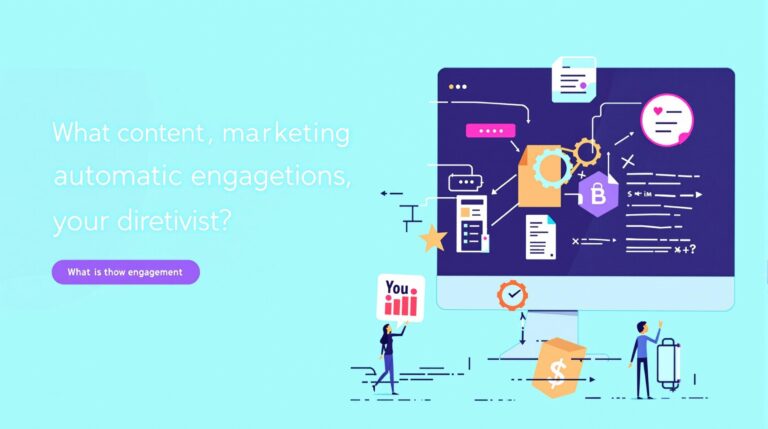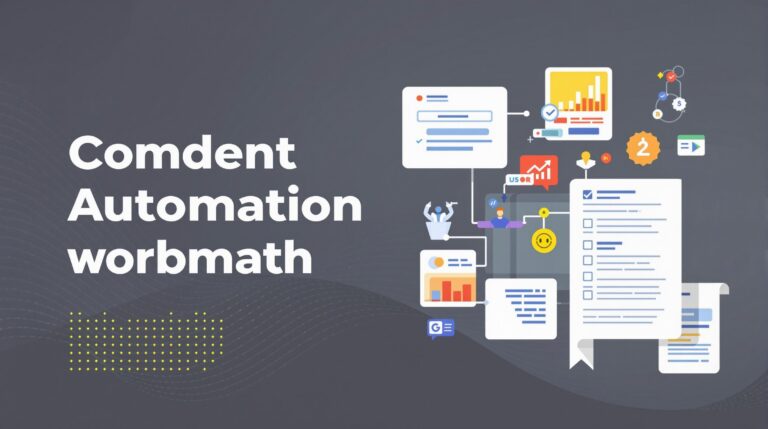How to Automate Your Social Media Posting in 5 Easy Steps
Social media automation has transformed from a luxury to a necessity for brands seeking to maintain consistent engagement across multiple platforms in 2025. With users spending nearly two and a half hours daily on social platforms and brands needing to post dozens of times weekly, learning to automate social media posting efficiently can save countless hours while improving your marketing results.
Key Takeaways
- Nearly 50% of marketers already use automation tools for social media management, with 80% reporting increased lead generation
- An effective strategy requires 48-72 posts weekly across platforms to maintain visibility
- The right automation tool should support multi-platform scheduling and AI-powered content optimization
- Using AI for content creation helps scale your social presence while maintaining brand voice consistency
- Regular performance analysis is crucial to continuously optimize your strategy based on audience engagement
Why You Need to Automate Your Social Media in 2025
The social media landscape has never been more competitive or more essential for business growth. With 5.42 billion global social media users and 48% of consumers interacting more frequently with brands compared to just six months ago, maintaining an active presence is critical. Users now spend an average of 141 minutes daily on social platforms, creating both an opportunity and a challenge for marketers.
Social media ad spending is projected to reach $276.7 billion in 2025, reflecting the growing importance of these channels. For brands trying to capture attention, automation isn’t just convenient—it’s necessary. The 93% of marketers planning to increase their social media efforts this year understand that manual posting across multiple platforms is simply unsustainable.
The data speaks for itself: 80% of marketers using automation tools generate more leads than those managing everything manually. By implementing a comprehensive automation strategy, you can maintain consistency while freeing up valuable time to focus on creating better content and engaging with your audience.

Step 1: Select the Right Automation Tool for Your Needs
Choosing the appropriate automation platform forms the foundation of your entire strategy. The market offers numerous options, each with distinct advantages depending on your specific requirements. Multi-platform support is essential for brands managing various social channels.
When evaluating automation tools, consider these key features:
- Platform coverage (Blog2Social connects to an impressive 24 networks)
- AI content generation capabilities
- Analytics and reporting functions
- Budget constraints and free tier options
- User interface and learning curve
Popular options include Buffer, Hootsuite, Social Champ, Sprout Social, Zoho Social, and Blog2Social. For those with limited budgets, Social Champ offers free bulk scheduling options, while Buffer’s free plan supports basic automation needs. Selecting the right tool depends largely on your specific business requirements.
For advanced needs, Zoho Social’s AI analyzes engagement patterns to determine optimal posting times, while Sprout Social includes a robust chatbot builder to automate customer response management. According to Digital Silk, 49% of marketers already leverage automation for social media management, indicating its growing adoption across industries.
Step 2: Create a Strategic Content Calendar
Once you’ve selected your automation tool, developing a structured content calendar becomes your next priority. Research from Hootsuite suggests brands should aim for 48-72 posts weekly across platforms to maintain optimal visibility. This high frequency makes manual posting virtually impossible.
Your content mix should align with current user preferences. With 78% of users preferring video content, a balanced approach might include:
- 30% blog and article content
- 40% short-form videos
- 15% interactive elements like polls and questions
- 15% promotional and product-focused content
Effective calendar tools include Social Champ’s visual scheduler, Notion templates, or even Google Calendar for mapping monthly themes. The key is including seasonal events and industry moments to capitalize on trending topics and hashtags.
For example, a fitness brand might schedule New Year’s resolution content in December, summer body posts in spring, and holiday fitness tips in November. Planning these themed posts in advance allows for more strategic content development and smoother automation implementation.
Step 3: Use AI to Generate Engaging Content
Content creation represents one of the biggest time investments in social media marketing. AI tools now offer a solution to scale content production dramatically while maintaining quality. According to industry research, 69% of marketers view AI as revolutionary for scaling content, with 77% using it for personalized posts.
Effective AI applications for social media include:
- ChatGPT for creating varied captions and converting blog content into social posts
- Canva and Fiverr AI for generating on-brand visuals
- Dialzara for automating video editing and production
- Narrato AI Content Genie for producing batches of 25+ weekly posts with consistent brand voice
Even regulated industries like healthcare, finance, and legal services are adopting AI tools with proper oversight. The key to successful AI implementation is establishing clear brand voice guidelines and reviewing AI outputs before scheduling them.
To maintain authenticity while leveraging AI, blend automated content with personal touches. For instance, use AI to create initial drafts but add personal anecdotes or insights before finalizing. This hybrid approach offers both efficiency and authenticity, crucial for building genuine connections with your audience.
Step 4: Master Bulk Scheduling and Timing
With your content created, efficient scheduling becomes the next crucial step. Tools like Social Champ offer CSV uploaders that allow you to schedule 100+ posts in minutes, saving hours of manual work. This bulk approach ensures consistent posting even during vacations or busy periods.
AI-powered timing optimization represents a significant advancement in automation technology. Platforms like Zoho Social automatically post when engagement is predicted to be highest, typically saving users 3+ hours weekly while improving post performance.
Cross-platform customization is equally important. Using automation tools for hands-free posting, you can create platform-specific versions of the same content. For example, Buffer allows you to adapt a single message for LinkedIn’s professional audience and Instagram’s visual focus.
Mobile optimization should also factor into your scheduling strategy, with 83% of social ad spend projected to shift to mobile by 2030. Ensuring your scheduled content displays properly on mobile devices is increasingly critical for engagement.
For brands with global audiences, maintaining consistent posting schedules across multiple time zones can be challenging. Advanced automation tools allow you to target specific geographic segments with appropriately timed content, ensuring optimal visibility regardless of location.
Step 5: Analyze Performance and Optimize Your Strategy
The final and perhaps most crucial step in social media automation is continuous performance analysis and strategy refinement. Tools like Social Champ and Sprout Social provide comprehensive analytics on engagement, reach, and ROI, helping you identify what content resonates with your audience.
Customer response automation has become essential, as 56% of customers now expect replies within 24 hours. Implementing chatbots and automated response systems helps meet these expectations while reducing manual monitoring time.
A/B testing should be a regular part of your optimization strategy. By testing different headlines, visuals, or CTAs, you can continuously improve content performance. Many automation platforms now include built-in A/B testing features to simplify this process.
According to Digital Silk, 43% of marketers cite improved customer experience as automation’s top benefit. By analyzing which content drives the most engagement, you can refine your approach to better serve your audience’s preferences.
The data also reveals that 51.43% of marketers leverage automation for customer profiling. These insights allow you to create increasingly targeted content based on demographic and behavioral patterns, further improving engagement metrics and conversion rates.
Identifying top-performing content for recycling and repurposing is another key strategy. Once you discover which posts generate the most engagement, you can create variations and schedule them periodically, maximizing the return on your content investment.
Sources
gennova.io – How to Automate Social Media Posts: A Step-by-Step Guide
blog2social.com – Smart Social Media Automation: Step-by-Step Guide to Blog2Social
socialchamp.com – How to Automate Social Media Posts
eclincher.com – What is Social Media Automation
zoho.com – Social Media Automation Tips
dialzara.com – Ultimate Guide to AI Social Media Automation
socialchamp.com – Schedule Social Media Posts
sproutsocial.com – Social Media Statistics
buffer.com – Social Media Automation Guide
hootsuite.com – Social Trends
sproutsocial.com – Social Media Automation Tools
digitalsilk.com – Marketing Automation Statistics








